Themed collection In memory of Giulio Jori

Obituary: Giulio Jori, 1939–2014
An obituary dedicated to Giulio Jori (1939–2014), a deeply admired and respected scientific leader and outstanding inspirational photobiologist of our times.
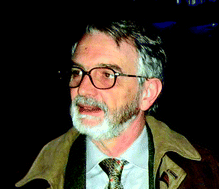
Photochem. Photobiol. Sci., 2015,14, 1223-1226
https://doi.org/10.1039/C5PP90022K
On the double role of Photofrin as a photo- and a radio-sensitising agent: a possible new combination therapy for tumours
Photochem. Photobiol. Sci., 2002,1, 438-439
https://doi.org/10.1039/B202849B
Antibacterial photodynamic therapy in dermatology
In general, extensive eradication of pathogens can be achieved under mild irradiation conditions, guaranteeing high selectivity. Moreover, the photosensitised inactivation of microorganisms is typically a multi-target process; consequently the selection of photoresistant microbial strains is very unlikely.
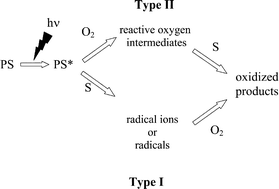
Photochem. Photobiol. Sci., 2004,3, 907-917
https://doi.org/10.1039/B407622B
Photosensitized inactivation of microorganisms
The combination of light and a photosensitising drug is currently being applied to the treatment of diseases caused by bacteria, yeasts, viruses and parasites, as well as to sterilisation of blood and other products.
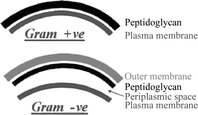
Photochem. Photobiol. Sci., 2004,3, 403-405
https://doi.org/10.1039/B311904C
Photothermal sensitisation: evidence for the lack of oxygen effect on the photosensitising activity
Photothermal sensitisation is promoted by high energy pulsed irradiation of Sens and induces cell death.

Photochem. Photobiol. Sci., 2005,4, 251-253
https://doi.org/10.1039/B416418K
Photoinactivation of bacterial strains involved in periodontal diseases sensitized by porphycene–polylysine conjugates
Chemical structure of BOHTMPn (A) and GlamTMPn (B) conjugated to polylysine oligomers to generate efficient antibacterial photosensitizers.

Photochem. Photobiol. Sci., 2002,1, 468-470
https://doi.org/10.1039/B200977C
Synthesis and photophysical properties of the photoactivatable cationic porphyrin 5-(4-N-dodecylpyridyl)-10,15,20-tri(4-N-methylpyridyl)-21H,23H-porphyrin tetraiodide for anti-malaria PDT
The synthesis and improved purification of C12 porphyrin are reported here.
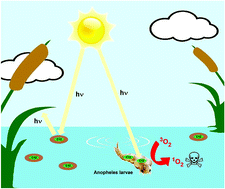
Photochem. Photobiol. Sci., 2015,14, 1290-1295
https://doi.org/10.1039/C5PP00139K
Porphyrin–silica microparticle conjugates as an efficient tool for the photosensitised disinfection of water contaminated by bacterial pathogens
A tetracationic meso-substituted amphiphilic porphyrin (abbreviated as C14) was encapsulated within silica microparticles to yield a conjugate which is shown to photodynamically kill Gram-positive (MRSA) and Gram-negative (E. Coli) bacteria.
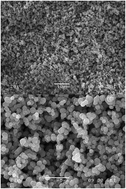
Photochem. Photobiol. Sci., 2013,12, 2170-2176
https://doi.org/10.1039/C3PP50282A
Effects of a new photoactivatable cationic porphyrin on ciliated protozoa and branchiopod crustaceans, potential components of freshwater ecosystems polluted by pathogenic agents and their vectors
A larvicidal porphyrin photosensitizer was tested on non target components of the ecosystem typical of Anopheles larvae, such as ciliated protozoa and branchiopod crustaceans.

Photochem. Photobiol. Sci., 2012,11, 294-301
https://doi.org/10.1039/C1PP05154G
Alterations of Escherichia colienvelope as a consequence of photosensitization with tetrakis(N-ethylpyridinium-4-yl)porphyrin tetratosylate
TN-Et-PyP-mediated photosensitization of E. coli cells upon blue light-irradiation induces an increased permeability of the outer membrane and subsequent damage of the inner membrane.
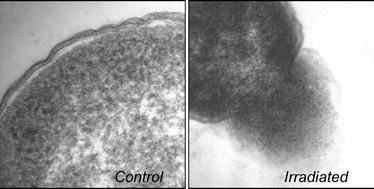
Photochem. Photobiol. Sci., 2011,10, 1046-1055
https://doi.org/10.1039/C1PP05028A
Photothermal sensitisation and therapeutic properties of a novel far-red absorbing cyanine
High energy pulse irradiation of cyanine-loaded melanoma cells with a Ti:sapphire laser at 810 nm promotes a photothermally sensitized process, which induces cell death via generation of a shock wave and consequent ejection of large masses of cytoplasmic materia.

Photochem. Photobiol. Sci., 2009,8, 1422-1431
https://doi.org/10.1039/B908495A
A novel 10B-enriched carboranyl-containing phthalocyanine as a radio- and photo-sensitising agent for boron neutron capture therapy and photodynamic therapy of tumours: in vitro and in vivo studies
A boronated phthalocyanine i.v.-injected to a melanoma-bearing mouse acts as both a neutron- and a photo-sensitizer inducing an efficient tumour response, thus opening the way to a combined BNCT–PDT therapy for cancer.

Photochem. Photobiol. Sci., 2006,5, 39-50
https://doi.org/10.1039/B506364G
Phthalocyanine -photosensitized inactivation of a pathogenic protozoan, Acanthamoeba palestinensis
Photosenitization of Acanthamoeba palestinensis with a tetracationic phthalocyanine causes extensive damage of vacuoles and the nucleus.

Photochem. Photobiol. Sci., 2003,2, 668-672
https://doi.org/10.1039/B300293D
Zinc octa-n-alkyl phthalocyanines in photodynamic therapy: photophysical properties, accumulation and apoptosis in cell cultures, studies in erythrocytes and topical application to Balb/c mice skin
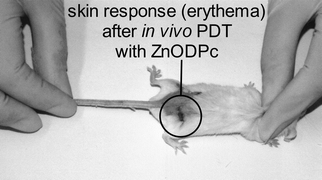
Photochem. Photobiol. Sci., 2003,2, 660-667
https://doi.org/10.1039/B211348A
Approaches to selectivity in the Zn(II)–phthalocyanine -photosensitized inactivation of wild-type and antibiotic -resistant Staphylococcus aureus
Photochem. Photobiol. Sci., 2002,1, 815-819
https://doi.org/10.1039/B206554A
Application of Photofrin II as a specific radiosensitising agent in patients with bladder cancer—a report of two cases
Photofrin can act as both photosensitiser and radiosensitiser for solid tumours, opening the perspective for a novel tumour treatment, based on a combination of radiation therapy and photodynamic therapy.

Photochem. Photobiol. Sci., 2002,1, 686-689
https://doi.org/10.1039/B203732G
Photophysical, photochemical and antibacterial photosensitizing properties of a novel octacationic Zn(II)-phthalocyanine
A newly synthesized octacationic Zn(II)-phthalocyanine at 1 μM concentration exhibits a high phototoxicity against both E. coli and methicillin-resistant S. aureus. Such an efficient photosensitised killing of bacterial cells is likely to be due to the high yield of 1O2 production upon red light-irradiation.

Photochem. Photobiol. Sci., 2002,1, 641-648
https://doi.org/10.1039/B202031A
Photosensitization of Colpoda inflata cysts by meso-substituted cationic porphyrins
Typical fluorescence microscope image showing the accumulation of porphyrin by Colpoda cysts and example of photodamaged Colpoda cysts.

Photochem. Photobiol. Sci., 2002,1, 560-564
https://doi.org/10.1039/B201267G
About this collection
In late December 2014, it was announced that Giulio Jori had passed away on the 23rd of December 2014. In 2002 Giulio was instrumental in launching Photochemical & Photobiological Sciences (PPS), as the official journal of the European Society of Photobiology (ESP) and the European Photochemistry Association (EPA) plus our other international partners.
As part of the celebrations of Giulio’s life and work, in this special web collection, we have brought together all the papers he published in PPS since the Journal was launched. These papers showcase the involvement Giulio had with both the photobiology and photochemistry communities. All papers in the collection are free to access using the links below.
We hope you enjoy reading these papers from this outstanding photoscientist.
Rex Tyrrell and Dario Bassani (Editors-in-Chief, Photochemical & Photobiological Sciences)
Andrew Shore (Editor, Photochemical & Photobiological Sciences)